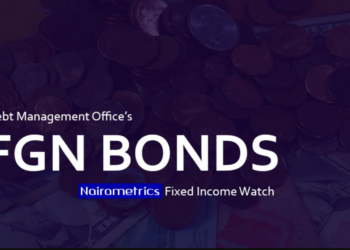The Federal Government has approved Nigeria’s Medium-Term Debt Management Strategy (MTDS) for 2024–2027, aimed at ensuring debt sustainability, improving fiscal stability, and deepening the domestic securities market.
The approval, announced by the Debt Management Office (DMO) in a press release on Saturday, followed the endorsement of the policy framework by the Federal Executive Council (FEC).
The MTDS, developed with technical support from the World Bank and the International Monetary Fund (IMF), is widely recognized as a global best practice for managing public debt.
According to the DMO, the MTDS seeks to balance the government’s financing needs with debt sustainability considerations, while minimizing costs and risks associated with borrowing.
“The key objectives of the MTDS are to meet the Government’s financing needs and payment obligations in the short to medium term, taking into consideration the costs and risks trade offs in the debt portfolio; to achieve optimum composition of the public debt portfolio that ensures debt sustainability; and to further deepen the domestic securities market through the introduction of new products,” the statement noted.
New debt targets set
Under the new strategy, Nigeria has set fresh debt sustainability benchmarks across key fiscal and risk indicators. Among them:
- Debt-to-GDP ratio is projected to rise from 52.25% at the end of 2024 to a ceiling of 60% by 2027.
- Interest payments-to-GDP is capped at a maximum of 4.5%, compared to 3.75% in 2024.
- Sovereign guarantees-to-GDP should not exceed 5%, up from the current 2.09%.
- Domestic-to-external debt mix will be adjusted from the current 48:52 ratio to a more favorable 55:45, to reduce foreign exchange risk exposure.
- Refinancing risk will be contained, with a maximum of 15% of debt maturing within a year, and debt maturing as a share of GDP capped at 5%.
- Average time to maturity for the debt portfolio is set at a minimum of 10 years, ensuring longer repayment cycles.
- Foreign exchange (FX) debt exposure will be reduced, with FX debt as a share of total debt capped at 45%, down from the current 51.75%.
The DMO explained that the formulation of the MTDS involved consultations with stakeholders in the monetary and fiscal space, including the Central Bank of Nigeria (CBN) and the Federal Ministry of Finance. Technical inputs from the World Bank and IMF ensured alignment with international standards.
What you should know
The new plan is also expected to reassure investors, credit rating agencies, and international partners that Nigeria remains committed to responsible debt management and fiscal discipline.
In 2021, FG approved MTDS for 2020-2023, where it indicated it is looking inward as far as debt is concerned.
The MTDS is a framework developed by the World Bank and IMF to guide the debt management decisions and operations of government authorities.























